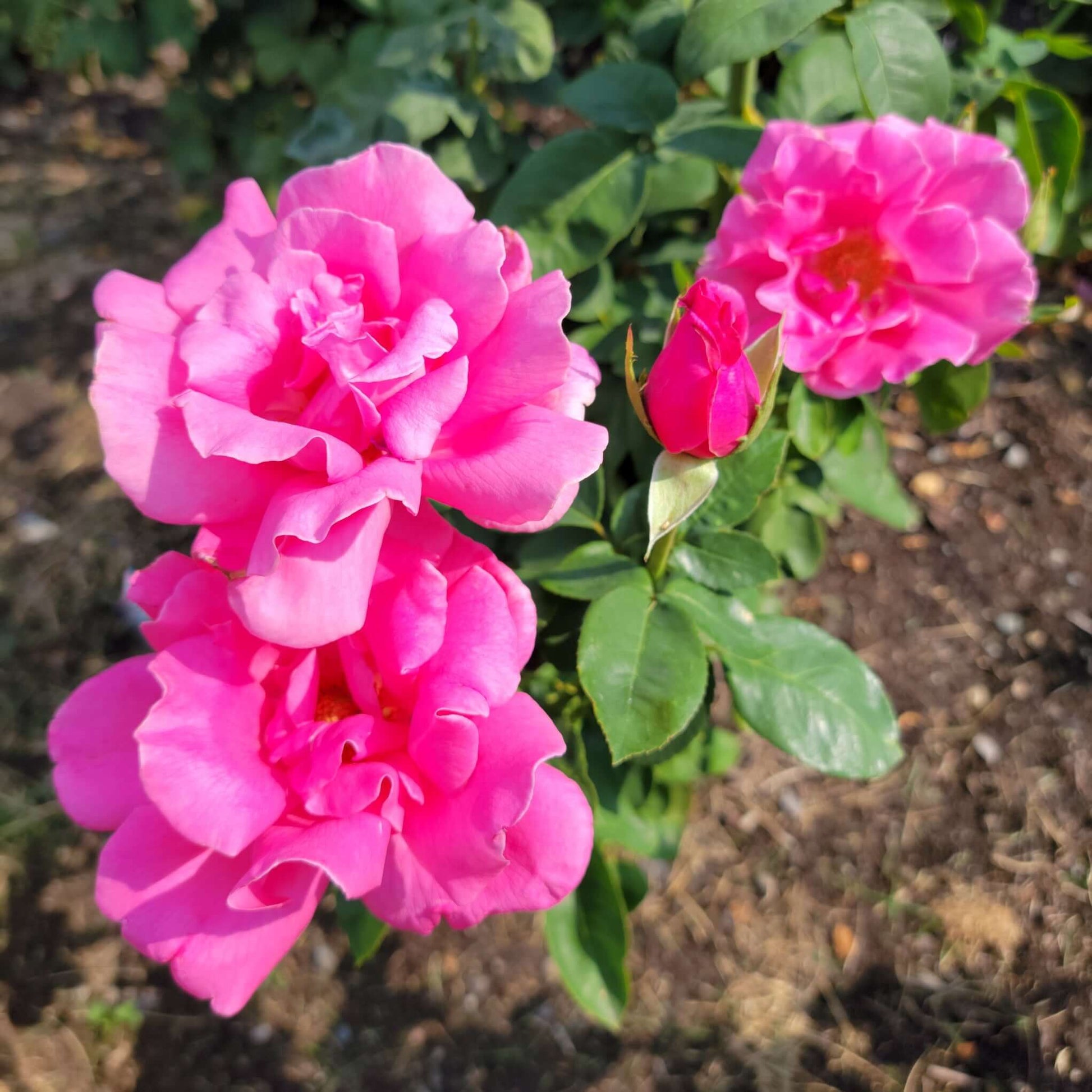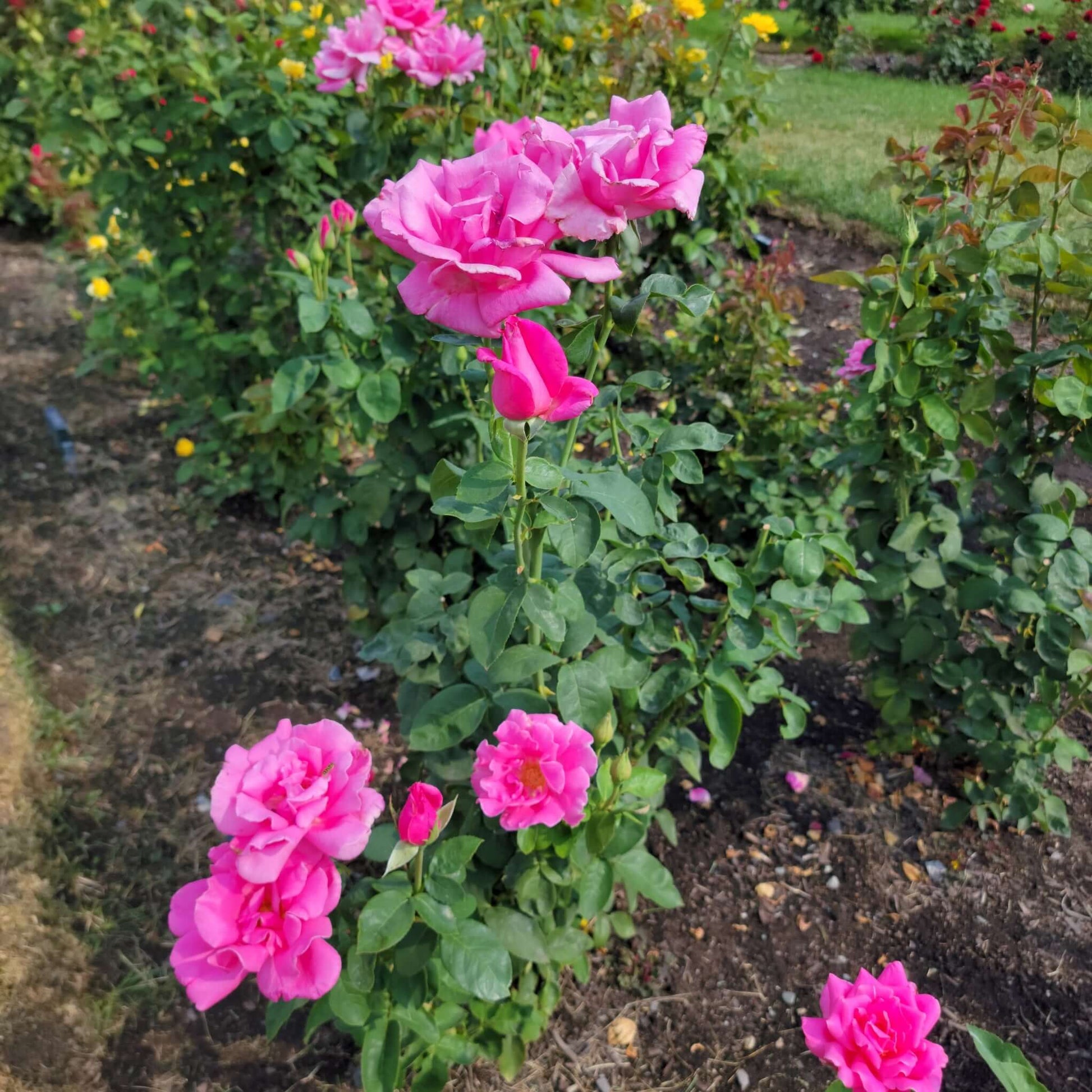
Perfume Delight Rose
Rosa 'Perfume Delight'
Delivery
24-hour money-back guarantee
Free delivery on orders over $349
Big Project? Call 888-444-1126 for bulk rates!
Rosa 'Perfume Delight' is a hybrid tea rose with a classic Damask rose fragrance and vibrant deep pink flowers. The fully double, 5-inch blooms are held on long, strong stems making them perfect for floral arrangements. Tolerant of both coastal and hot, arid conditions, and disease-resistant, ‘Perfume Delight’ is a resilient and alluring beauty that enhances any garden.
Suitable for both garden beds and containers, ‘Perfume Delight’ hybrid tea rose is a vigorous, bushy, upright shrub with large, glossy, leathery leaves. Mostly solitary, the vivid pink flowers, with 25-35 large petals, bloom in flushes from spring through fall.
How large does Perfume Delight Rose grow?
What kind of light does it prefer?
What type of soil does it need?
How should it be watered and maintained?
3-6 ft.
2-3 ft.
Moderate
Pollinators, Bees, Butterflies
Perfect Your Landscape With Expert Help
Customize your yard with confidence. Schedule your free consultation today and bring your outdoor space to life!


